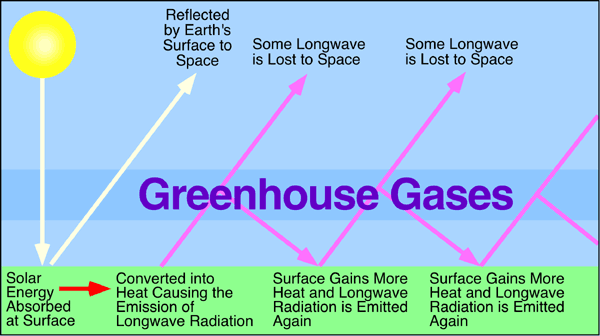Greenhouse Effect Illustrated

| Figure 7h-2: The diagram above illustrates the greenhouse effect. This process begins with the absorption of shortwave radiation from the Sun. Absorption causes the solar energy to be converted into sensible heat at the Earth's surface. Some of this heat is transferred to the lower atmosphere by conduction and convection. After the heating of the ground and the lower atmosphere, these surfaces become radiators of infrared or longwave radiation and they begin to cool. This emission of energy is directed to space. However, only a portion of this energy actually makes it through the atmosphere. About 90% of the longwave radiation emitted from the Earth's surface is absorbed by the atmosphere's greenhouse gases. Absorption of this energy causes heat energy to be added to the Earth's atmospheric system through the warming of greenhouse gas molecules. The greenhouse gas molecules then begin radiating longwave energy primarily back to the Earth's surface where it once again creates heat energy. The heating of the ground by the longwave radiation causes the ground surface to once again radiate, repeating the cycle described above, again and again, until no more infrared radiation is available for surface absorption. In conclusion, the net result of the greenhouse effect is an increase in the creation and storage of heat energy to the Earth's atmosphere and ground surface. |